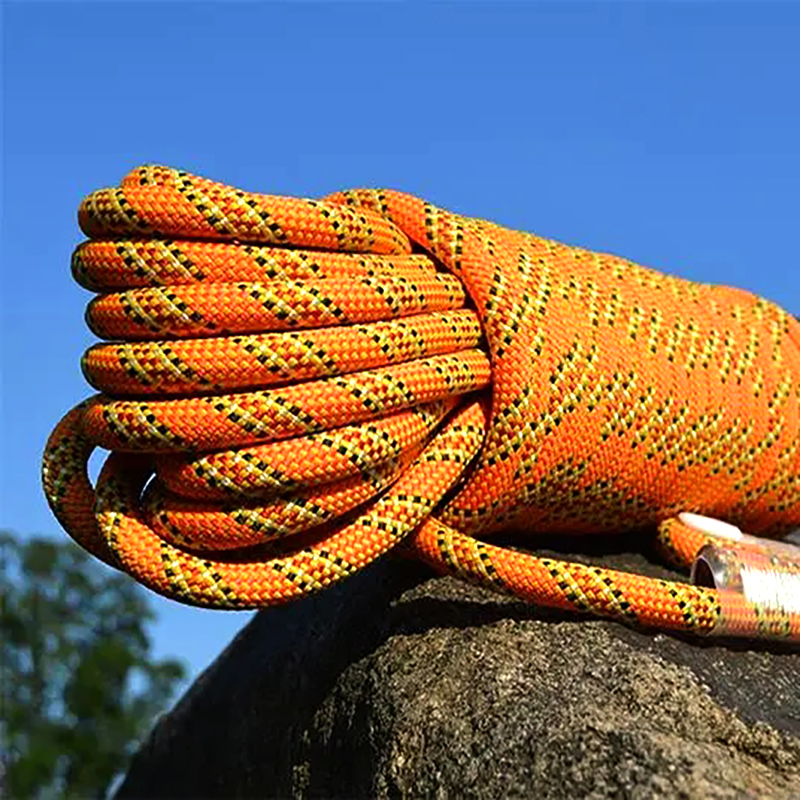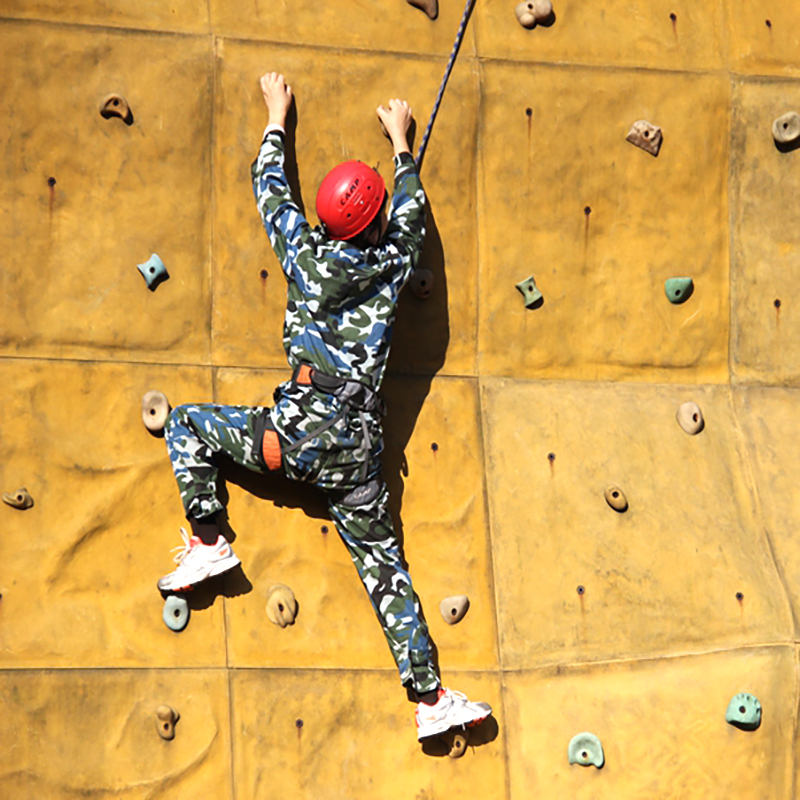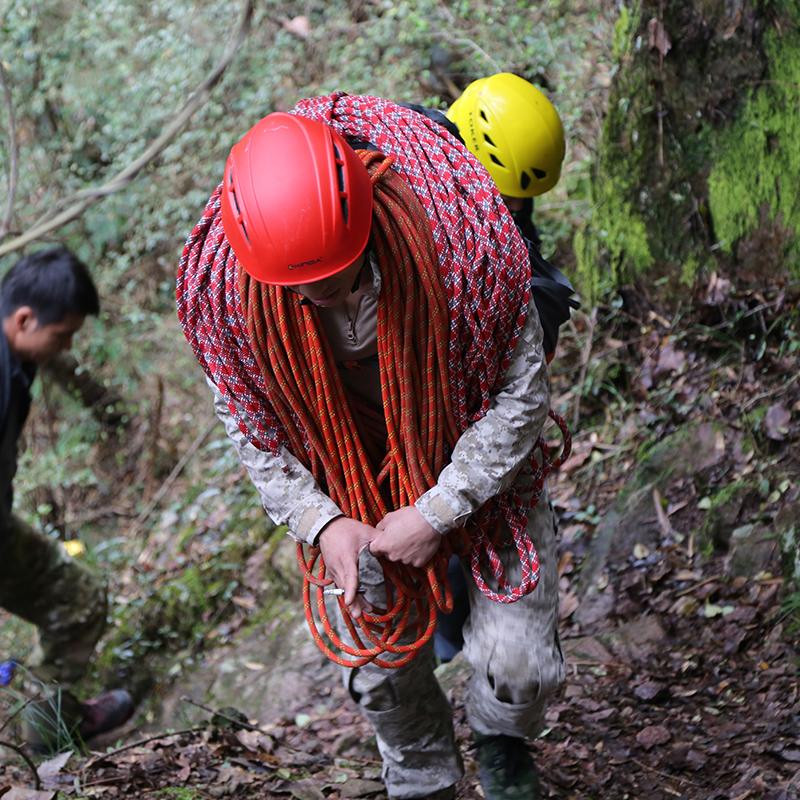Climbing ropes can be divided into dynamic ropes and static ropes. The dynamic rope has good ductility so that when there is a falling occasion, the rope can be stretched to a certain extent to slow down the damage caused by the rapid fall to the climber.
There are three usages of dynamic rope: single rope, half rope, and double rope. The ropes corresponding to different usages are different. The single rope is the most widely used because the usage is simple and easy to operate; Half rope, also known as double rope, uses two ropes to be buckled into the first protection point at the same time when climbing, and then the two ropes are buckled into different protection points so that the direction of the rope can be adjusted ingeniously and the friction on the rope can be reduced, but also increased safety as there are two ropes to protect the climber. However, it is not commonly used in actual mountaineering, because the operation method of this kind of rope is complicated, and many climbers use the method of sling and quick hanging, which can also better adjust the direction of the single rope;
The double rope is to combine two thin ropes into one, so as to prevent the accident of the rope being cut and falling. Generally, two ropes of the same brand, model, and batch are used for rope climbing; Ropes with larger diameters have better bearing capacity, abrasion resistance, and durability, but are also heavier. For single-rope climbing, ropes with a diameter of 10.5-11mm are suitable for activities that require high wear resistance, such as climbing large rock walls, forming glacier formations, and rescues, generally at 70-80 g/m. 9.5-10.5mm is a medium thickness with the best applicability, generally 60-70 g/m. The 9-9.5mm rope is suitable for lightweight climbing or speed climbing, generally at 50-60 g/m. The diameter of the rope used for half-rope climbing is 8-9mm, generally only 40-50 g/m. The diameter of the rope used for rope climbing is about 8mm, generally only 30-45g/m.
Impact
Impact force is an indicator of the rope's cushioning performance, which is very useful for climbers. The lower the value, the better the cushioning performance of the rope, which can better protect climbers. Generally, the impact force of the rope is below 10KN.
The specific measurement method of the impact force is: the rope used for the first time falls when it bears a weight of 80kg (kilograms) and the fall factor (Fall Factor) is 2, and the maximum tension the rope bears. Among them, the fall coefficient = the vertical distance of the fall / the effective rope length.
Waterproof treatment
Once the rope is soaked, the weight will increase, the number of falls will decrease, and the wet rope will freeze at low temperatures and become a popsicle. Therefore, for high-altitude climbing, it is very necessary to use waterproof ropes for ice climbing.
Maximum number of falls
The maximum number of falls is an indicator of the strength of the rope. For a single rope, the maximum number of falls refers to the fall coefficient of 1.78, and the weight of the falling object is 80 kg; For the half rope, the weight of the falling object is 55 kg, and other conditions remain unchanged. Generally, the maximum number of rope falls is 6-30 times.
Extensibility
The ductility of the rope is divided into dynamic ductility and static ductility. The dynamic ductility represents the percentage of rope extension when the rope bears a weight of 80 kg and the fall coefficient is 2. Static extensibility represents the percentage of elongation of the rope when it bears a weight of 80 kg at rest.



Post time: Jan-09-2023

